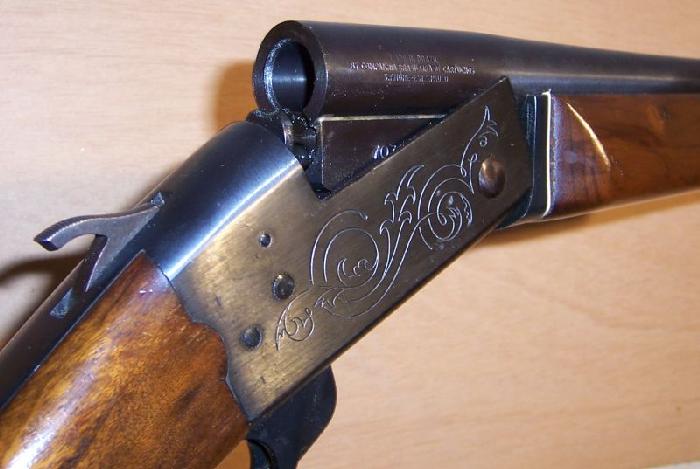 |
| Yes Johnny, you could buy guns at K-Mart when I was a kid. |
My first shotgun. I bought this little gem at a gun show around 2000 for $60. I did not own a shotgun at the time and the price was attractive so I decided what the heck.
These were sold in K-Marts back in the day. SS Kresgee was the founder of K Mart, so it only makes sense. Just as JC Higgins guns were sold through Sears and Western field were Monkey Wards.
These guns were made in Brazil by Boito and marked with the Kresgee name, much like many Jc Higgins guns were re badged High Standards, Marlins, etc. I have always been impressed by the quality of the metal and wood in these guns. They are not high end by any means. But they have good blue and the wood is decent. The plastic parts are not that great and some of them on my gun have broken. What can I say? It's a cheap gun that is 30 years old.
I like the way that the gun functions very much. It opens very smoothly and easily. I need only pull on the release and it falls open and ejects any empty shell well to the rear. Lock up is still plenty tight and I have not had any issues with it digesting any ammo I put in there. Trigger weight and take up are nice. I love the way the gun is taken down as well. There is no screw to remove from the forearm. It is held tight by a spring mechanism. To remove it, you need only grasp the front and pull down smartly. The forearm pops off and the barrel can be removed by opening the action at that point. I think it is a superior design to the screw retained arm on the NEF Pardners.
These guns were offered in 12 and 20 gauge, as well as .410 bore. I have seen them all for sale and none of them command much money. That is a reflection on the low cost of the guns initially, but also the fact that most people don't know anything about them. I like the NEF guns, but I would choose the Kresgee over them. It's just smoother.
My gun came with a fixed full choke. It disintegrated clays, but was a bit hard to hit with at short ranges. You had to be very accurate, while others on the range could nick the target with their improved cylinder and modified chokes and score points. I removed about 1 inch of the barrel to open the choke to approximately modified. It seems to hit more easily now. I did not pattern the gun before, so I guess I really don't know if my work did much good. But hey, it's a $60 shotgun, I'm not getting too technical.
My only complaint, other than the broken plastic, is the hammer. It is a low profile design that is somewhat hard to get a grip on if you are trying to lower it on a live shell. Coupled with the very strong hammer spring, it makes for some interesting de-cocking. My thumb slipped off the hammer once and the gun blew a hole in the ground in front of me. I had it pointed in a safe direction, so no harm was done, but it was embarrassing and a bit scary. The gun has a transfer bar, but that doesn't help if your thumb slips off the hammer. I have debated cutting deeper groves into the hammer to prevent a reoccurrence. I do not like accidental discharges.



